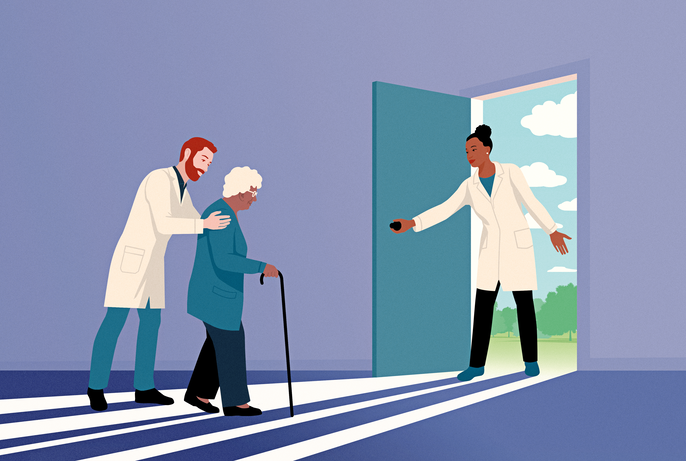By Beth Saulnier
Illustrations by Joey Guidone
When emergency services arrived at Mary Patterson’s Manhattan apartment, they found the 78-year-old widow on the living room floor, unable to get up after a fall; although she’d fractured her right hip and suffered from mild dementia, she’d been able to reach the phone to call 911. The environment that greeted the EMTs was disturbing: there was almost no food in the refrigerator and the poorly kept apartment was littered with expired, half-filled bottles of her medication. Her middle-aged son, who was supposed to be her caregiver, was nowhere to be found.
At the NewYork-Presbyterian/Weill Cornell Medical Center emergency department, the medical team discovered that in addition to the hip fracture—which would require surgery—Patterson was emaciated and the left side of her face was covered in a mottled rainbow of bruises, which she insisted were all due to the fall. When her son finally arrived in the ED, a nurse overheard him blaming his mother for having fallen down and noticed that the older woman seemed scared of him. Suspecting that the woman might be a victim of abuse, the ED staff decided to call a pager number that would tap a unique and invaluable resource: the hospital’s Vulnerable Elder Protection Team (VEPT).
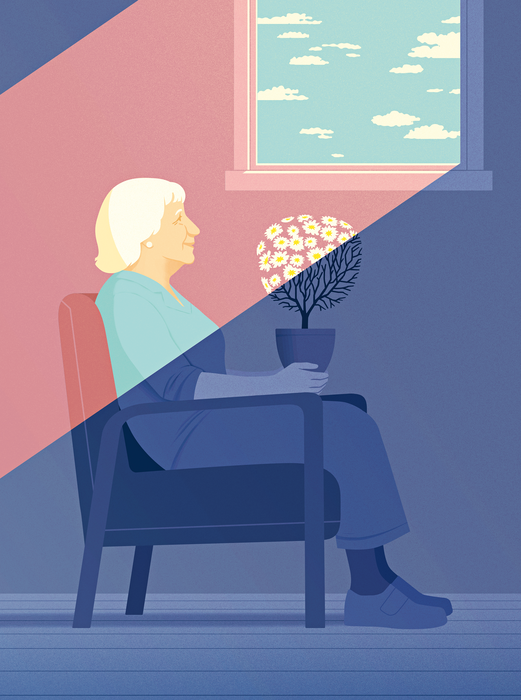
While Mary Patterson is a fictional character—a representational case study created by Weill Cornell Medicine clinicians—the issue her scenario highlights is all too real. According to a 2015 study published in the New England Journal of Medicine by two longtime leaders in elder abuse research—Dr. Mark Lachs, the Irene F. and I. Roy Psaty Distinguished Professor of Medicine at Weill Cornell Medicine, and Dr. Karl Pillemer, a professor of human development on the Ithaca campus—about one in 10 home-dwelling adults over age 60 have suffered some form of mistreatment including physical, psychological, verbal or sexual abuse; financial exploitation; or neglect. And since such cases are rarely detected, precious few victims get help. As the 2011 New York State Elder Abuse Prevalence Study—of which Dr. Lachs was a principal investigator and Dr. Pillemer served as an adviser—noted, for every case of elder abuse that is reported, 24 are not.
VEPT is designed to change that. Launched in April 2017, the first-of-its-kind initiative aims to detect cases of elder abuse and intervene, not only by providing victims with appropriate medical care but working to ensure that they are protected after discharge—which could include connecting them with social services for home-based assistance or facilitating placement in a shelter or care facility. The team is the brainchild of Dr. Tony Rosen (MD ’10), an assistant professor of emergency medicine at Weill Cornell Medicine, an assistant attending physician at NewYork-Presbyterian/Weill Cornell Medical Center, a mentee of Dr. Lachs, and a pioneer in the field of using the ED as an intervention point for elder abuse. As Dr. Rosen explains, it’s modeled after the multidisciplinary teams that have long been deployed in cases where child abuse is suspected. Says Dr. Rosen: “Even though there are several hundred child protection teams currently active in the United States—including one in every hospital I’ve ever worked in—we knew of no analogous teams that focused on older adults.”
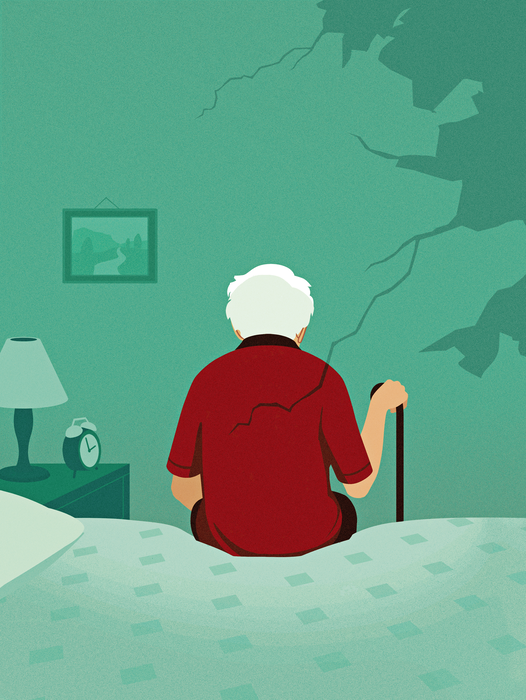
Dr. Rosen—who already had a master’s in public health from UCLA when he came to Weill Cornell—began delving into the topic of elder abuse as a medical student working under Dr. Lachs, who hoped that his mentee would specialize in internal medicine and geriatrics. “Tony has been able to have just as important an impact on geriatric care here at Weill Cornell and nationally as an emergency physician,” observes Dr. Lachs, also an attending geriatrician at the Center on Aging at NewYork-Presbyterian/Weill Cornell. “An intervention to improve care for elder abuse victims in the emergency department allows us to identify particularly vulnerable older adults at a critical time. It’s a transformative approach that has huge potential.”
In addition to several physician assistants and two social workers, VEPT comprises three physicians in the NewYork-Presbyterian/Weill Cornell ED, all of whom have completed Weill Cornell Medicine’s fellowship in geriatric emergency medicine: Dr. Rosen; Dr. Michael Stern (MD ’01), an associate professor of clinical emergency medicine at Weill Cornell Medicine and an associate attending physician at NewYork-Presbyterian/Weill Cornell; and Dr. Mary Mulcare, an assistant professor of clinical emergency medicine at Weill Cornell Medicine and an assistant attending physician at NewYork-Presbyterian/Weill Cornell. If an ED staffer suspects a patient is a victim of abuse, the team can be activated by pager 24/7, similar to other specialty consults. And to prevent any further harm, staff can take practical measures such as changing their name in the computer (in case their abuser tries to find them), forbidding visitors to the bedside and alerting hospital security of the situation. “Sometimes the emergency department is the only opportunity for a patient who is vulnerable and subjected to abuse to see a healthcare provider,” Dr. Stern observes. “These are patients who are sequestered away, who are scared, and who might not have the mobility or means to have follow-up care with a regular provider.”
As the physicians note, elder abuse cases are not only heartbreaking but often excruciatingly complicated. A person’s caregiver may also be their abuser; as much as an older adult may want the abuse to stop, he or she may have an even greater fear of being removed from familiar surroundings and placed in a nursing home. An abuser may be dependent on their victim for financial support, and that same abuser’s caretaking—however fraught and flawed—may be the only thing preventing the victim from being institutionalized. Experts also believe that the frequency and severity of abuse has likely increased during the COVID pandemic—with more older adults isolated, community-based resources limited and evidence suggesting that rates of other types of family violence, such as intimate partner abuse, have risen—making a program such as VEPT even more important. “We’re working with a very sensitive topic, similar to child abuse or domestic violence,” says Dr. Mulcare. “It has a lot of social connotations to it, and obviously there are legal implications as well. You’re not just asking a patient, ‘Does your chest hurt?’ You’re asking very sensitive questions. The key is to interview the patient alone in a safe environment, and not with other people in the room that might change their answer or put them in a more vulnerable position than they already are.”
Identifying Victims
While there are myriad forms of elder abuse, VEPT—given its position within the emergency department—focuses on physical abuse. That work dovetails with ongoing research (published in July 2020 in Annals of Emergency Medicine and funded by a five-year, $800,000 Beeson Emerging Leaders Career Development Award in Aging from the National Institute on Aging and the American Federation for Aging Research) by Dr. Rosen and colleagues on ways to distinguish accidental injuries from those caused by acts of violence. Again, their efforts echo strides that have been made over the past few decades in the field of child abuse—where, for example, a spiral fracture is more likely an indication that the victim has had their arm brutally twisted than that they took an innocent spill on the playground. “As ER doctors, we do a much better job of identifying child abuse than elder abuse,” says Dr. Rosen, who has given talks about his work with VEPT at institutions and conferences around the country, and ultimately hopes to see it replicated nationwide. “The way we do it is, ‘Gosh, that injury pattern just shouldn’t happen as a result of a fall off the monkey bars.’ But when we looked, there were over 1,000 articles in the extant literature on the differences between patterns of unintentional and intentional pediatric injury—and only five on elder abuse.”
Given that elder abuse is so seldom detected—and even when it is, issues of informed consent would be challenging in cases where victims suffer from dementia—Dr. Rosen and his collaborators needed a creative approach to conducting their research. They wound up partnering with district attorneys’ offices in Brooklyn, New York’s Westchester County and Seattle, which provided detailed documentation of physical injuries in criminal cases of elder abuse. “We have data on close to 200 victims—cases that have been successfully prosecuted and are indisputable,” says Dr. Sunday Clark, former director of research for the Department of Emergency Medicine and now an adjunct associate professor of epidemiology research in emergency medicine and of research in population health sciences. As a control, they gathered data on more than 500 older adults who came to the ED after a fall (and whose injuries were definitively shown not to have stemmed from abuse) and consented to participate in the study.
Together, that body of information allowed the researchers to discern some key differences between injuries in older adults who have suffered abuse and those who’ve had an accidental fall—not only a typical reason for an ED visit, but a common way that evidence of abuse is explained away. (Some of the groundwork for the project was laid with previous research on systematic ways to describe injuries, published in Injury Prevention in 2017, and on protocols for photographing acute injuries, published in Academic Emergency Medicine in 2016.) “We found a couple of critical things,” says Dr. Rosen. “The first is that abuse victims are more likely to have injuries on the left side of their face, which is consistent with research in intimate partner violence and child abuse.” The simple reason: most people—and therefore most abusers—are right-handed.
They also found that injuries to the ear are almost always due to abuse—and the same is true of the neck. “That was one of the most compelling findings,” Dr. Rosen says. “It turns out that neck injuries occur commonly in abuse and almost never in falls. This makes intuitive sense; when you fall, the neck is protected by your shoulder and your face. The only way to injure your neck is to, say, fall against the edge of a refrigerator or a table—and that already sounds unlikely.” Another red flag: injuries on the face but not on the legs. “If you fall, you’re supposed to have findings all over your body,” he says. “But if you just have them on your face and nowhere else, that’s concerning. Therefore, it’s not just the presence of injuries, but the simultaneous presence and absence that may be helpful.”
A Vital Resource
Since VEPT’s inception, it has been activated more than 300 times—an average of about twice a week. Though abuse was ruled out in some of those cases, Dr. Rosen and his colleagues note that the activation numbers underscore the fact that clinicians are becoming increasingly aware of the phenomenon and are eager to tap resources to combat it. “These cases are really time-consuming and complex, and knowing that there’s a team that can provide support and assist in their management has helped boost identification, intervention and understanding,” says social worker Alyssa Elman, who manages the VEPT program and serves as a liaison to community agencies that aid victims. The team’s acronym has even become shorthand for seeking out expertise to intervene in potential abuse cases. Says Dr. Rosen: “They have a verb now: ‘VEPT’ the patient.”
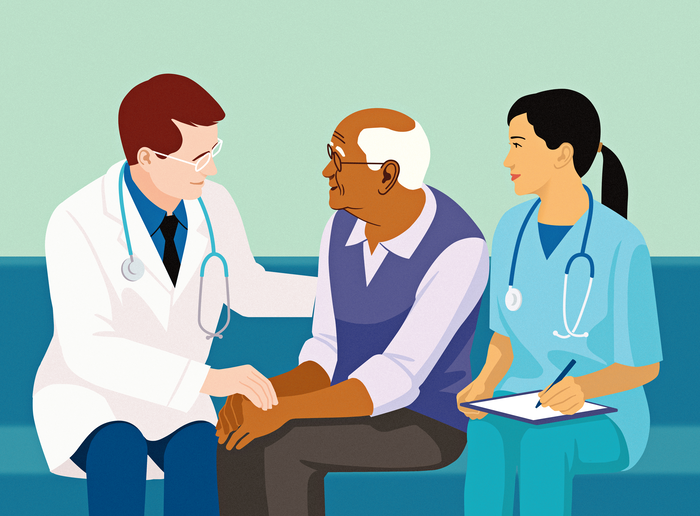
While VEPT was intended as an ED resource, it has also responded to consult requests from colleagues elsewhere in the hospital. And under a three-year, $2 million grant from the New York State Office of Victims Services that Weill Cornell Medicine and NewYork-Presbyterian were awarded in summer 2019, the team will expand further, with plans to add a geriatric psychiatrist and to offer its expertise to other NewYork-Presbyterian emergency departments through telemedicine technology. “It addresses a societal need,” says Dr. Rahul Sharma, chairman of emergency medicine at Weill Cornell Medicine and emergency physician-in-chief at NewYork-Presbyterian/Weill Cornell. “Elder abuse is something that we probably don’t talk about enough, and it’s under-recognized. There’s no better environment than the ED to identify these patients. A lot of these elder abuse cases would come back numerous times, and it was very hard to put the pieces together; if you thought someone had a fall, you’d suture up the laceration and think you were done. But now by identifying these patients, getting them on the right track and giving them the appropriate support system, we’ve been able to reduce visits to the ED and change their living situations at discharge. We can have a tremendous impact on their lives.”
As social worker Risa Breckman notes, medical providers overall can play a vital role in stopping elder abuse—for reasons that go beyond the clinical, and which underscore the challenges in combatting it in comparison to child abuse. “Children are expected to be in school, and if they’re not, someone notices,” says Breckman, the recently retired director of the New York City Elder Abuse Center, which is part of Weill Cornell Medicine’s Division of Geriatrics and Palliative Medicine. “With older adults, often there’s not any place they’re expected to be; the one place they might go regularly is an annual doctor’s visit. Or when they come to the ED, the staff might be the only people who can detect and intervene before they go back to the invisible place where the abuser wants them to be, hidden from view.”
Another major issue in detecting abuse of elders versus children, of course, is their inherent physiological differences. Common conditions of old age—and the way they’re treated—can mask injuries incurred as a result of violence. “A lot of older adults tend to be on blood-thinning medications that may make them bruise easily; they could bump into the kitchen table and get a massive bruise on their thigh. And they have thinner bones because of osteopenia and osteoporosis, so they’re more likely to fracture bones with minor trauma,” says Dr. Rosen. “When a child has a rib fracture, the whole hospital goes crazy, and appropriately so. Part of the reason is that children aren’t supposed to have rib fractures. They require a lot of force; it’s a very uncommon injury and strongly suggestive of something bad, potentially abuse. In contrast, if an older adult has a rib fracture, the radiologist might not even comment on it. It’s too common, so they think it may be a result of minor trauma and is unlikely to be relevant.”
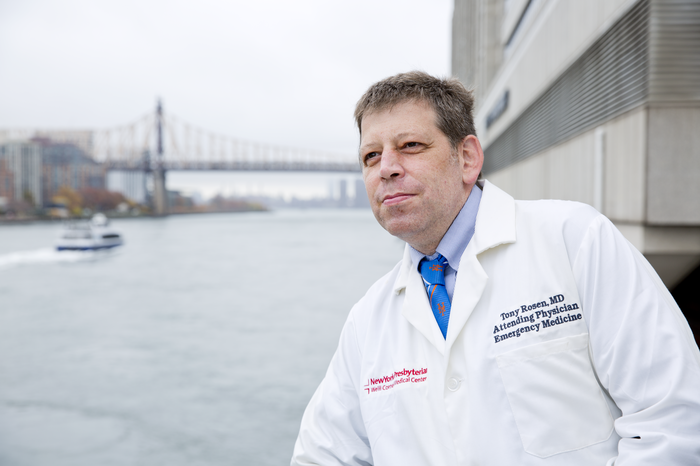
Dr. Tony Rosen. Credit: John Abbott
With funding from the National Institute on Aging and in collaboration with Weill Cornell Medcine’s Department of Population Health Sciences, Dr. Rosen and colleagues are currently using both Medicare claims data and the information they’d previously gleaned from district attorneys’ offices to study how abuse victims tend to intersect with the healthcare system. “That’s the next set of questions from a research perspective,” he says. “Can we describe the healthcare utilization of these patients—and is it fundamentally different from other patients in an important, measurable way, so we can use it to identify early that these folks are being victimized?”
When Dr. Rosen was contemplating whether VEPT was feasible, among the experts he tapped was Deborah Holt-Knight, deputy commissioner of New York City’s office of Adult Protective Services. A veteran of more than three decades in the field, Holt-Knight calls the team “a resource that no one else is offering, and a way to keep people safe.” VEPT, she says, is an invaluable tool for case workers coping with potential abuse cases in the city. One particularly useful aspect: through a dedicated phone number, elders suspected to be abuse victims can be transported directly to the NewYork-Presbyterian/Weill Cornell ED for evaluation by VEPT staff. “Being out in the field, believing that someone is a victim of abuse, and having no resources at your fingertips is a very scary situation; you know in your gut that something’s going on, and you believe that if you leave them they will be further at risk,” she says. “There have been times where we’d call 911, the person is taken to an emergency room, and they’re cleared medically and go right back home. VEPT gives us an option to take someone out of a dangerous situation and bring them to an ER where people are equipped to deal with their issues. I believe that this resource is going to save lives.”
This story will appear in the Summer 2021 issue of Weill Cornell Medicine Magazine.

